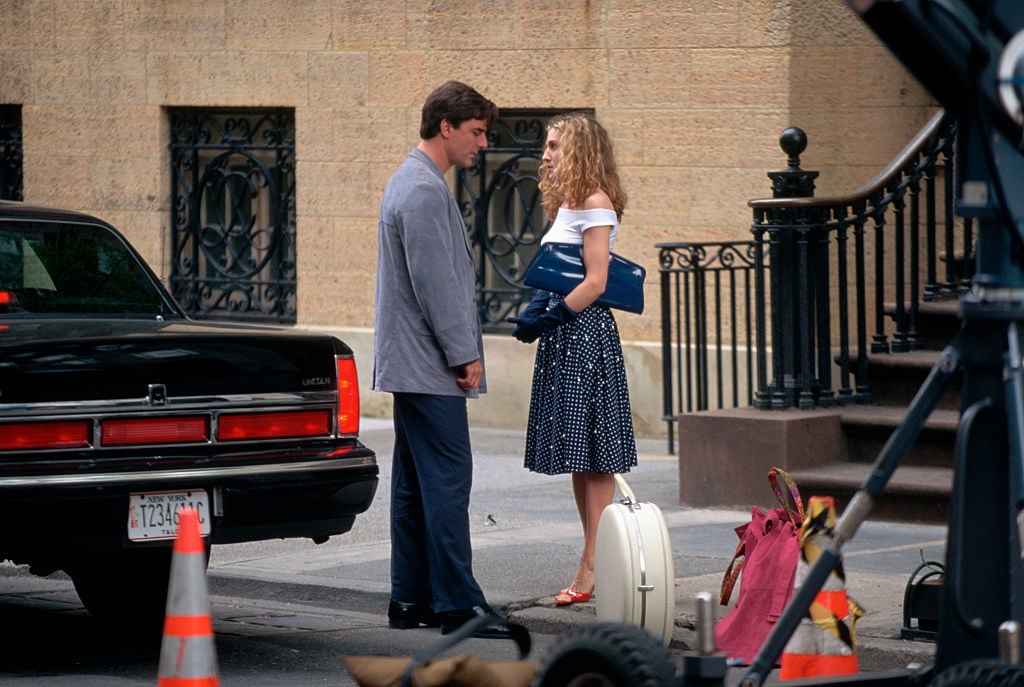‘Sex and the City’: How Much Would Carrie Bradshaw Need to Make to Actually Afford her Lifestyle?
Carrie Bradshaw’s lifestyle was the dream of many a young single woman. Even now, 15 years since she last graced the small screen, her style – and a seemingly endless supply of cash – is the envy of women all over the country. Carrie’s life sure looks glamorous, but that doesn’t mean it was realistic. In fact, Carrie’s entire approach to living in New York City is as unrealistic as it gets. Let’s break down exactly how the numbers don’t add up.
How much does the average columnist make?
Today, the average columnist would be pulling in around $52,000 per year, according to Girl Boss. Now, it’s been a while since Carrie has graced television screens, so her income in the late 1990s and early 2000s would have likely been closer to around $38,000.

If she was making the average salary for a columnist, that means she was grossing around $800 a week. With a desire for only the best footwear, the sex expert was happily plunking down about $525 per pair of Manolos. Those cosmos don’t come cheap, either. A single cocktail in a club or lounge will cost between $12 and $20. Add in her desire to never cook in her kitchen and apparent shopping addiction, and Bradshaw’s paycheck would be spent long before rent even became a consideration.
How much did Carrie’s rent cost?
Carrie claimed to pay $750 a month in rent, but the odds that she’d score such a sweet deal are pretty low. According to the New York Daily News, the average cost of a one-bedroom on the Upper East Side was around $1,700 a month in 2000, two years after the show premiered.

Carrie’s apartment was meant to seem modest, and in a lot of ways, it was. The building was clearly a walkup. It was a converted brownstone, and while it had plenty of charm, the dated kitchen and odd layout were meant to evoke an image of a starving artist. The problem is, even a moderately successful artist would likely be priced out of her living accommodations, even if they didn’t have a penchant for high-priced heels and cocktails.
Carrie’s refusal to take the subway is completely unrealistic
Carrie appeared to have a severe disdain for the subway system. Truth be told, very few people enjoy riding the subway, but it’s a necessary evil for Manhattan dwellers. Not only is it the fastest way to navigate the city, but it’s also the most economical.
The unlimited ride card was introduced in 1998, the year Sex and the City debuted. That year it cost $63 to ride for one month, according to Mashable. In May 2003, about a year before the series wrapped, the price spiked to $70 for a 30-day card.
In 2004, however, the average taxi fare was $8.65 for a one-way trip, according to Schaller Consulting. Carrie, assuming she only took one trip back and forth per day, was wasting over $17 each day on cab fare. Over 30 days, she was spending $519 just on cab fare.
The writers of Sex and the City used an easy out to explain away Carrie’s wonton spending
Carrie Bradshaw would be over her budget before she even paid her rent in full for the month. To ensure the sex columnist could live the lifestyle she and fans had become accustomed to, they utilized one of the most common explanations for shows based in New York: Carrie’s apartment was rent-controlled.

The writers of Friends used the same tactic to explain how a waitress and a chef could afford a large West Village apartment. Carrie alleges her studio, too, is rent-controlled. Bradshaw, however, never explains how she stumbled into the sweet, sweet deal.
Even in a rent-controlled scenario, Carrie would have needed well over $100,000 a year to even begin to accommodate her lifestyle. Even then, she would have had to serious cut down on her shoe buying, and perhaps clear the sweaters out of her stove to cook up a meal every so often.


